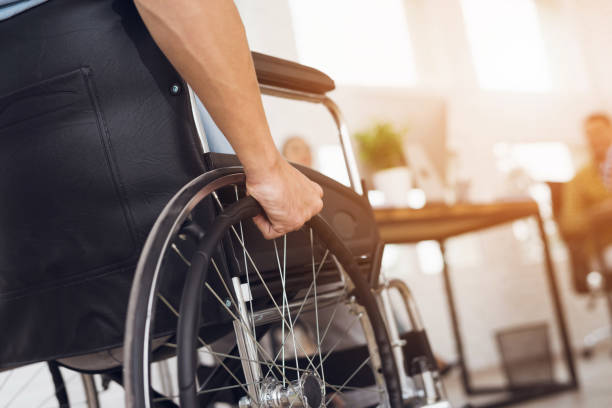Wood Flooring and Wheelchairs: Are They a Good Match?
Wheelchair use is at an all-time high in the United States. An estimated 3.5 to 5.5 million Americans use a wheelchair or similar device, and the number continues to grow each year.
The ADA (Americans with Disabilities Act) mandates wheelchair accessibility in public spaces. While it is not required in privately owned single-family homes, you want to ensure that your wheelchair-bound loved one can get around easily, comfortably, and safely.
Flooring for Wheelchair Navigability
Any type of flooring needs to provide smoothness and a low rolling resistance to accommodate wheelchairs. It must also be durable and resistant to abrasion and denting. Here is a short list of other requirements to consider:
· Comfortable
· Safe under wet or dry conditions
· Smooth transition over thresholds
· Easy to maintain
· Aesthetically pleasing
· Code compliant for commercial spaces
Engineered vs. Solid Hardwood Flooring
Engineered hardwood, introduced in the 1960s, is made from several layers of wood veneers laminated to a substrate of plywood to form a single plank. Its cross-ply construction makes it more dimensionally stable and more resistant to moisture and humidity than natural hardwood. Solid hardwood, on the other hand, is more susceptible to wear. However, it can be refinished more frequently (3 to 5 times) than its engineered counterpart (1 to 3 times).
Both engineered and solid hardwood flooring can be used in areas with wheelchair traffic. Engineered wood is suitable for light commercial settings due to its affordability, durability, and resistance to moisture, while hardwood is better adapted for residential use.
Top Reasons for Using Hardwood Flooring
There are many good reasons to use hardwood flooring in spaces that accommodate wheelchairs, including…
- Easy mobility and smoothness
- Durable and resistant
- Simple to clean
- Hygienic
- Highly rated in safety and accessibility
- Enhances aesthetics
- Customizable
Additional Considerations for Hardwood Flooring
Hardwood floors are prized for their timeless elegance and unique beauty. They can easily be refinished to repair damage, making them an excellent option for both homes and commercial spaces. Here are some additional considerations:
Surface
Wheelchairs move well over hard, flat surfaces. Therefore, choose a hardwood such as hickory, oak, maple, pine, or white ash, which are all easy to source in the United States. If your budget allows, you can go for an extra-durable exotic hardwood such as ipe or mahogany.
Check out the species’ Janka hardness test rating, which measures the resistance of a piece of wood to wear and denting with the use of a steel ball, serving as an excellent guideline.
Finish
The finish, or topcoat, on your hardwood floor affects its aesthetics and durability. Opt for satin or matte finishes, because they tend to hide scuffs and scratches. Polyurethane adds extra smoothness and durability, or you can opt for a water-based catalyzed finish for its low level of VOCs. Factory-finished hardwood flooring is often available with an especially resistant coating such as aluminum oxide. But
It is advised to avoid high-gloss finishes because they can highlight imperfections, but more importantly, they can be very slippery.
Adaptability to Ramps and Lifts
One of the advantages of hardwood is that it is easily modified, allowing for the integration of and a smooth transition to ramps and lifts. This not only enhances accessibility but also maintains the aesthetic integrity of any space.
Maintenance
Hardwood floors should be properly maintained to maximize their functionality and aesthetics. They should be kept free of dirt, debris, and moisture, and swept or vacuumed daily. Hardwood requires refinishing on a regular basis to keep it in its best shape.
Conclusion
Solid hardwood is an excellent choice of flooring for homes and commercial spaces that accommodate wheelchairs. If you choose your wood carefully, protect it with a suitable finish, and maintain it properly, it will provide a long-lasting, beautiful solution to accessibility in any space.

